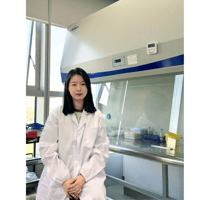The USP mRNA virtual summit 2025 Basel, Switzerland, March 31, 2025 — On March 11, the U.S....
How dsRNA can jeopardize your RNA project
RNA-based medicines are a class of treatments that leverage RNA molecules to target and modulate gene expression for therapeutic purposes. This field has gained significant attention due to its promise in treating a wide array of diseases, including cancer, genetic disorders, and viral infections. As the demand for RNA-based therapeutics continues to rise, maintaining the purity, stability, and efficacy of these RNA products is essential for clinical applications.
A critical challenge in the development of RNA-based therapies is the presence of unintended impurities, particularly double-stranded RNA (dsRNA). While dsRNA is an inevitable byproduct of in vitro transcription (IVT), uncontrolled contamination can pose serious risks. Unchecked contamination can trigger potent immune responses through innate immune pathways, such as the activation of Toll-like receptors (TLRs), and can interfere with the translation of therapeutic mRNA or circRNA—ultimately reducing treatment effectiveness and safety.
Even small amounts of dsRNA can cause unintended immune stimulation, reduce translation efficiency, and introduce variability across batches, posing major roadblocks for regulatory approval and clinical consistency.
Researchers and manufacturers in the field are developing robust strategies and analytical methods to minimize dsRNA presence, ensuring that the final RNA product is both safe and capable of achieving its intended therapeutic goals.
What is dsRNA? How does it form?
Double-stranded RNA is a structural form of RNA that consists of two complementary strands bound together in a helical formation. In mRNA manufacturing, dsRNA emerges as a byproduct of the IVT process, where RNA polymerases synthesize mRNA from a DNA template.
The undesired impurity results from:
-
Secondary structures or hairpins are formed by self-complementary sequences (self-annealing).
-
Transcription errors, specifically incomplete termination or re-initiation.
-
Antisense transcription, created from the opposite DNA strand, hybridizes with the sense mRNA.
 Sources of dsRNA Contaminants in IVT mRNA Production. This diagram illustrates how unwanted dsRNA impurities arise during in vitro transcription (IVT). While the expected IVT process generates a single-stranded RNA transcript, dsRNA can form via self-annealing, random priming of abortive transcription, and antisense transcription.
Sources of dsRNA Contaminants in IVT mRNA Production. This diagram illustrates how unwanted dsRNA impurities arise during in vitro transcription (IVT). While the expected IVT process generates a single-stranded RNA transcript, dsRNA can form via self-annealing, random priming of abortive transcription, and antisense transcription.
How dsRNA interferes with mRNA therapeutic efficacy
The presence of dsRNA in mRNA-based medicine has several risks:
-
Innate Immune Activation – dsRNA is recognized as a viral signature by the innate immune system, mainly via pattern recognition receptors (PRRs) like Toll-like receptor 3 (TLR3) and retinoic acid-inducible gene I (RIG-I). This can lead to inflammation, fever, and a diminished therapeutic effect, especially in vaccines or chronic therapies. Controlling dsRNA is key for vaccine production.
-
Reduced Protein Expression – Due to its resembles to viral genome, the cell’s machinery degrades dsRNA as a defense mechanism. This leads to lower translation efficiency, reducing the amount of therapeutic protein generated from mRNA or circRNA molecules.
-
Batch-to-Batch Variability – Inconsistent dsRNA removal strategies can introduce variability in manufacturing, making it challenging to achieve reproducible clinical outcomes.
Discover dsRNA-free mRNA manufacturing
The detection and control of dsRNA during RNA IVT is essential to ensure safe consistent mRNA therapeutics manufacturing. There are several analytical and detection methods to detect dsRNA impurities available in the market:
-
dsRNA-specific ELISA assays
-
Electrophoretic separation with dsRNA ladders
-
Next-generation sequencing and chromatography
-
State-of-art proprietary technology to analyse and purify RNA products.
To dive deeper on this topic, check our webinar at the USP mRNA Virtual Summit about CATUG's analytical methods for dsRNA detection in IVT mRNA by our Director of Analytical Development Department, Dr. Michael Zhang.
dsRNA standards and ladders
Double-strand RNA standards and ladders are used by researchers to benchmark and quantify dsRNA impurities with high accuracy. These tools can be used in any lab to:
-
Reliably assess dsRNA contamination at various stages of production.
-
Standardized calibration for quality control testing.
-
Compare across different manufacturing conditions to optimize purification steps.
Purchase our dsRNA standards and ladders.
Next-gen RNA manufacturing
To ensure therapeutic efficacy with minimal side effects, the next generation of RNA therapeutics should include strict dsRNA controls. Manufacturing methods should provide:
-
High-yield, high-purity RNA products.
-
Reduced immunogenicity without compromising stability or expression.
-
Compliance with regulatory expectations for RNA therapeutics.
Get RNA products with minimal dsRNA content.
Why partner with CATUG RNA Biotechnology?


